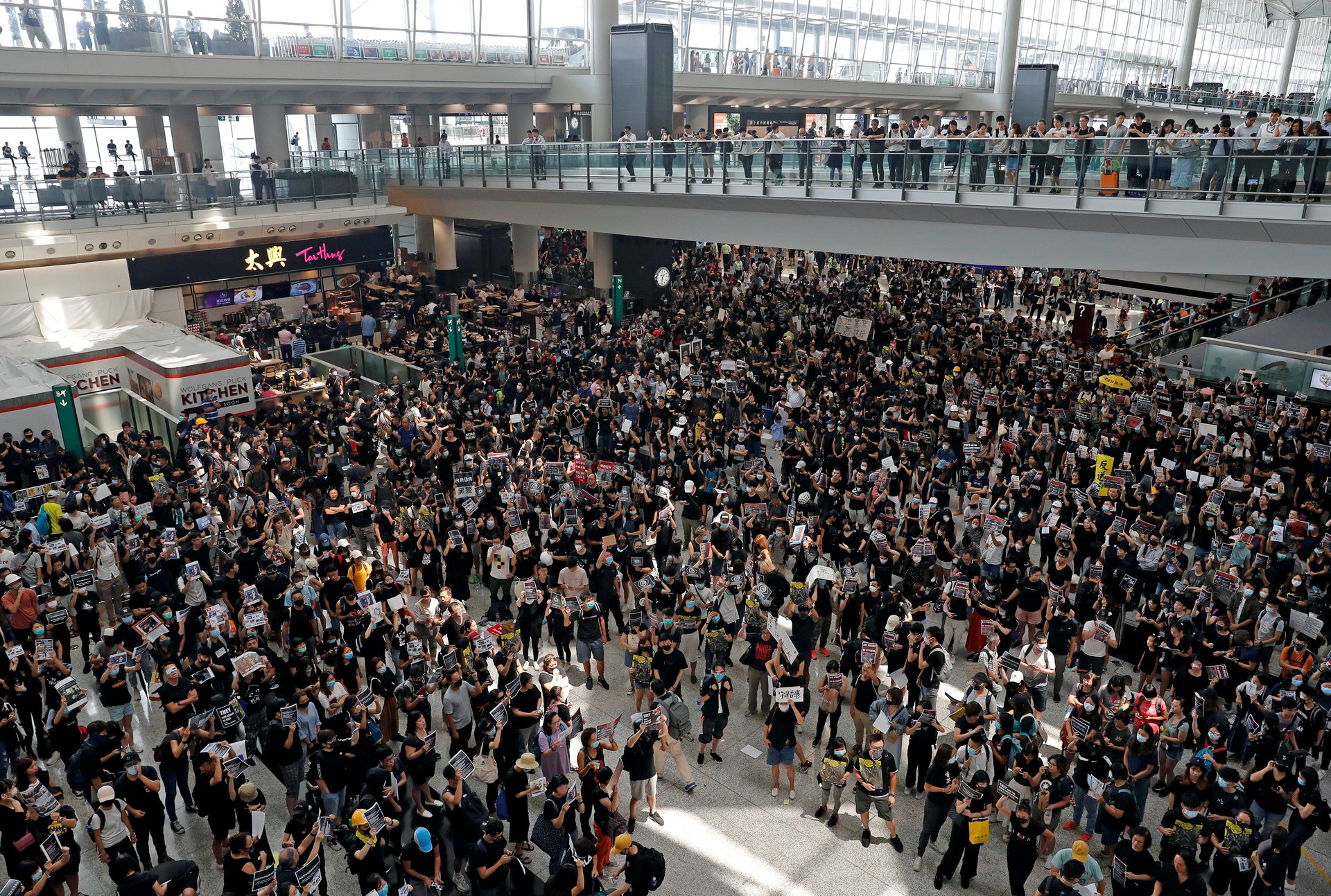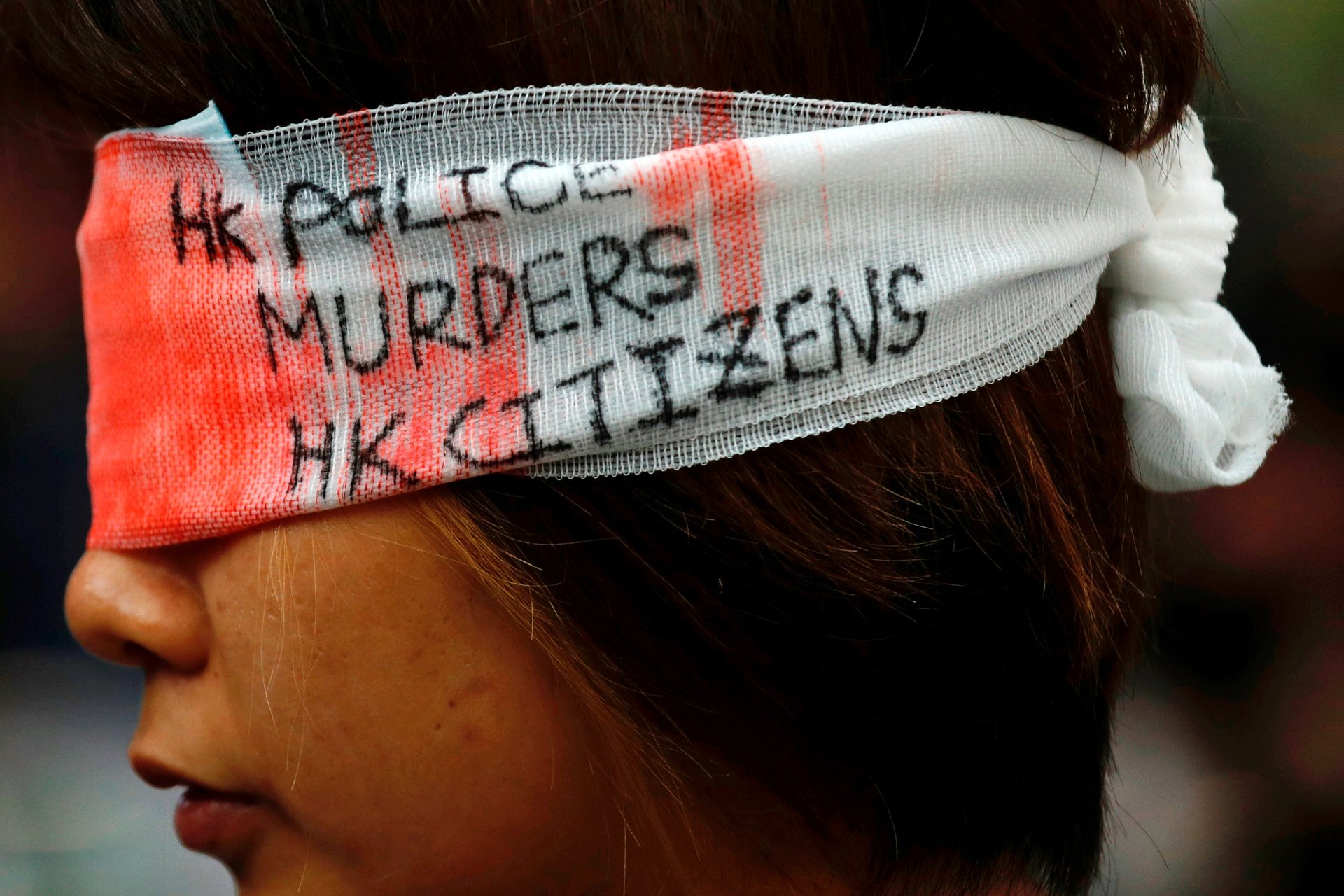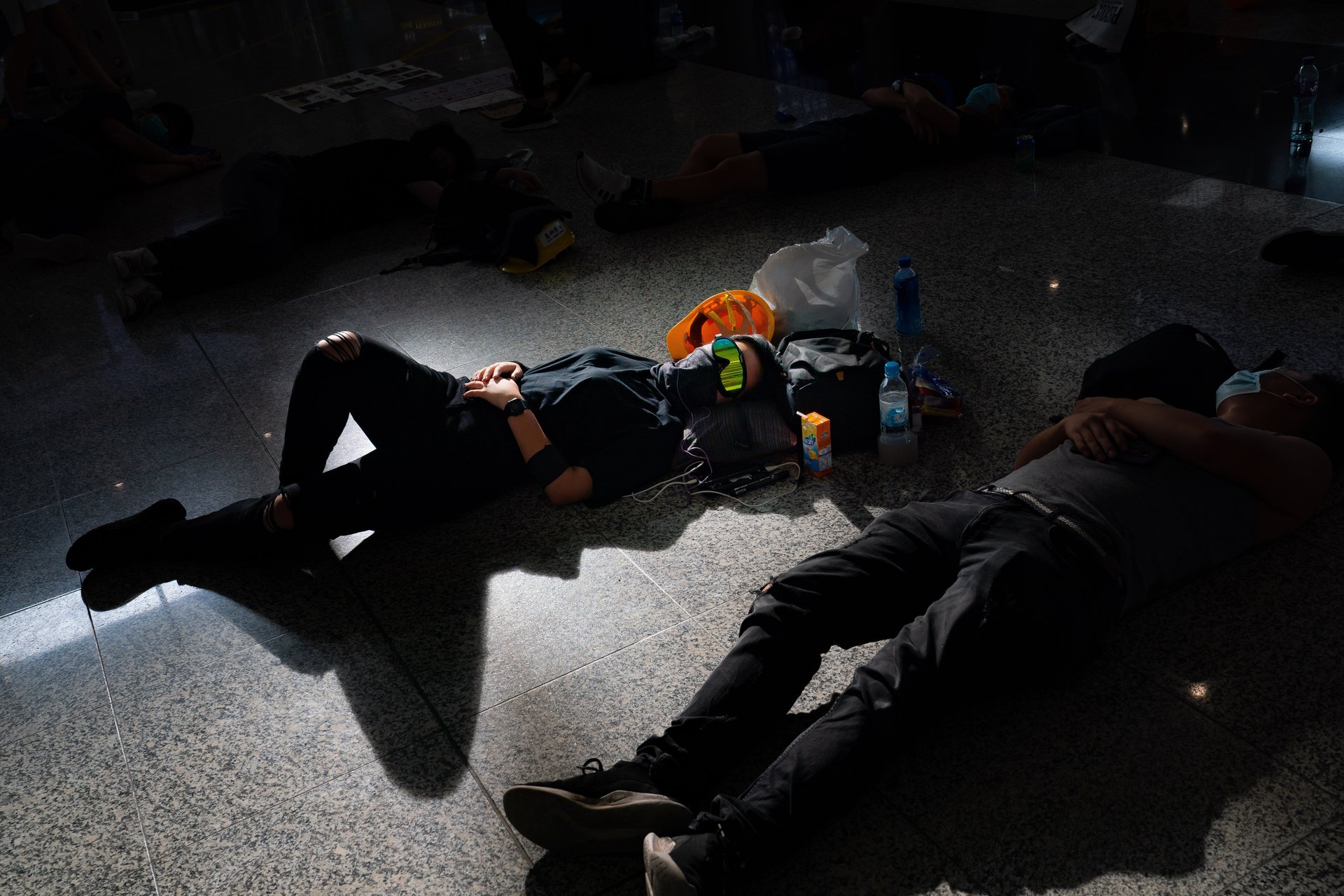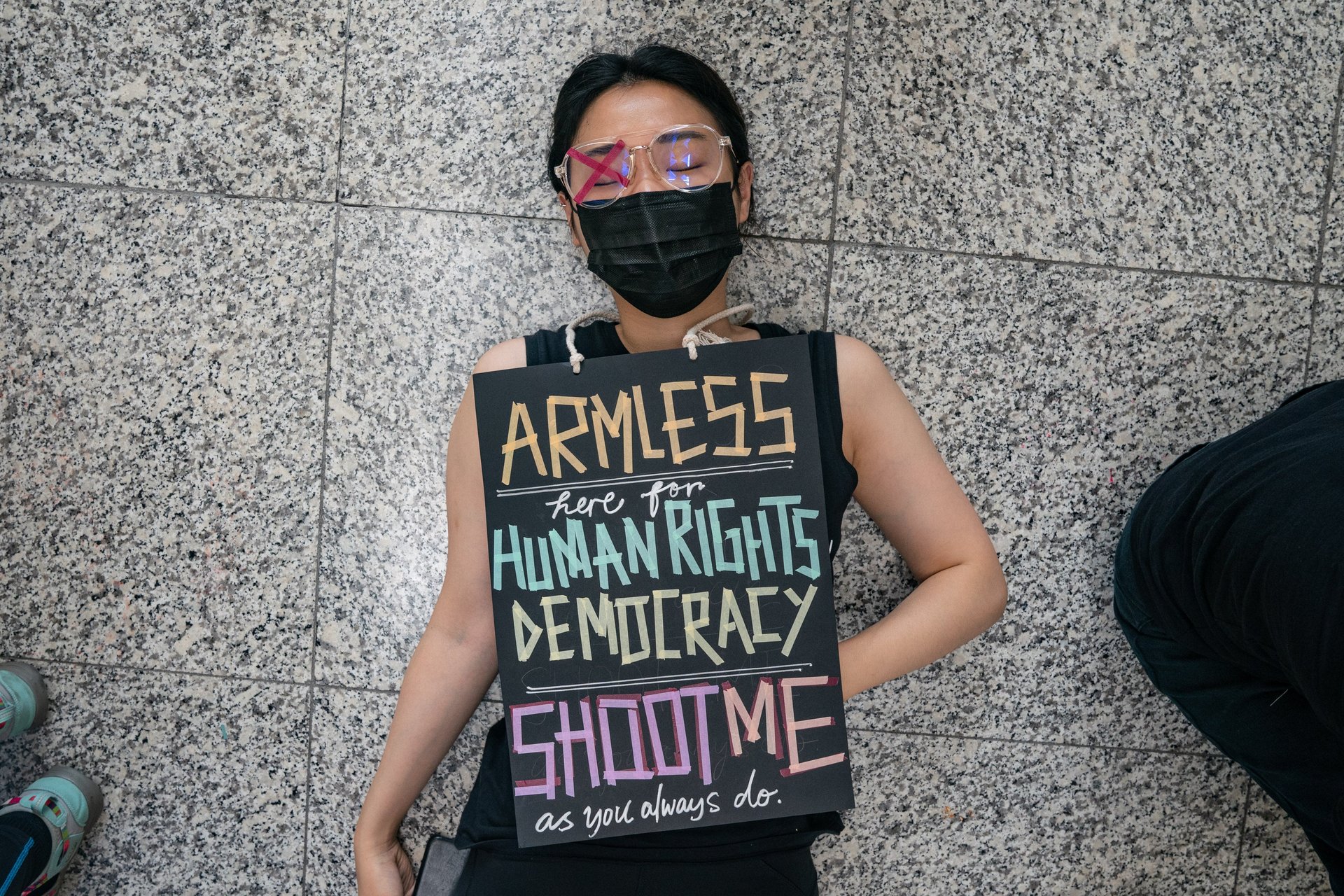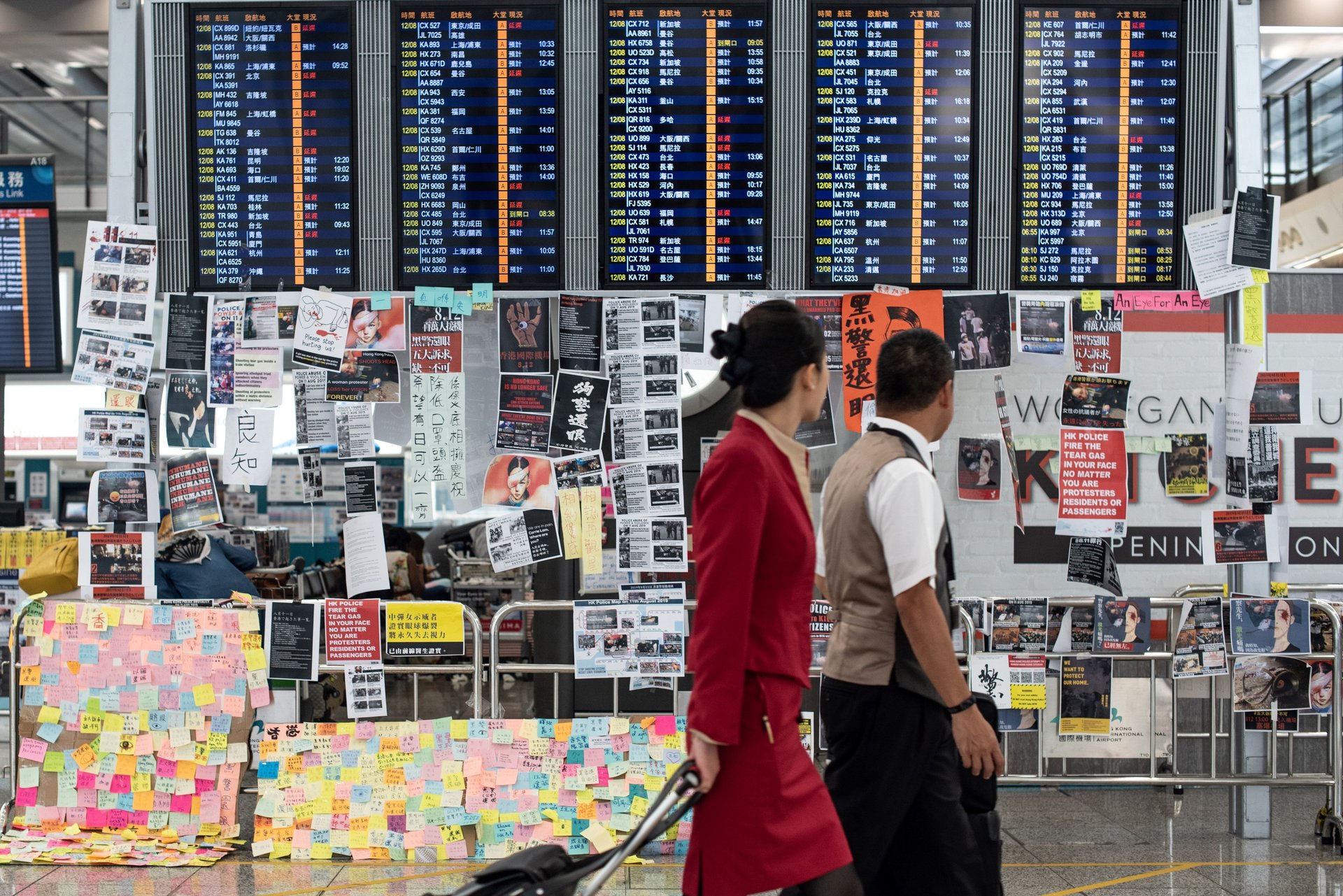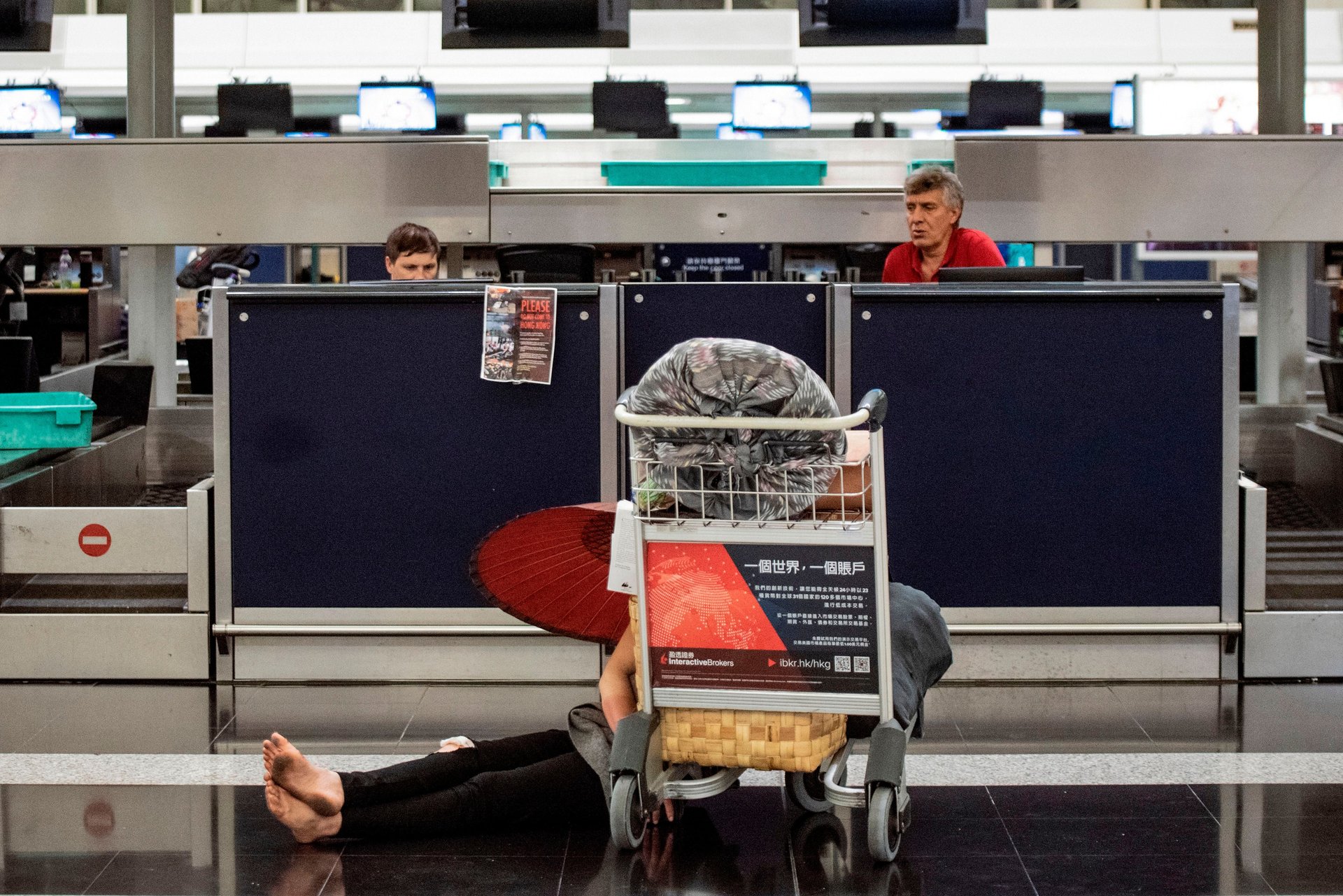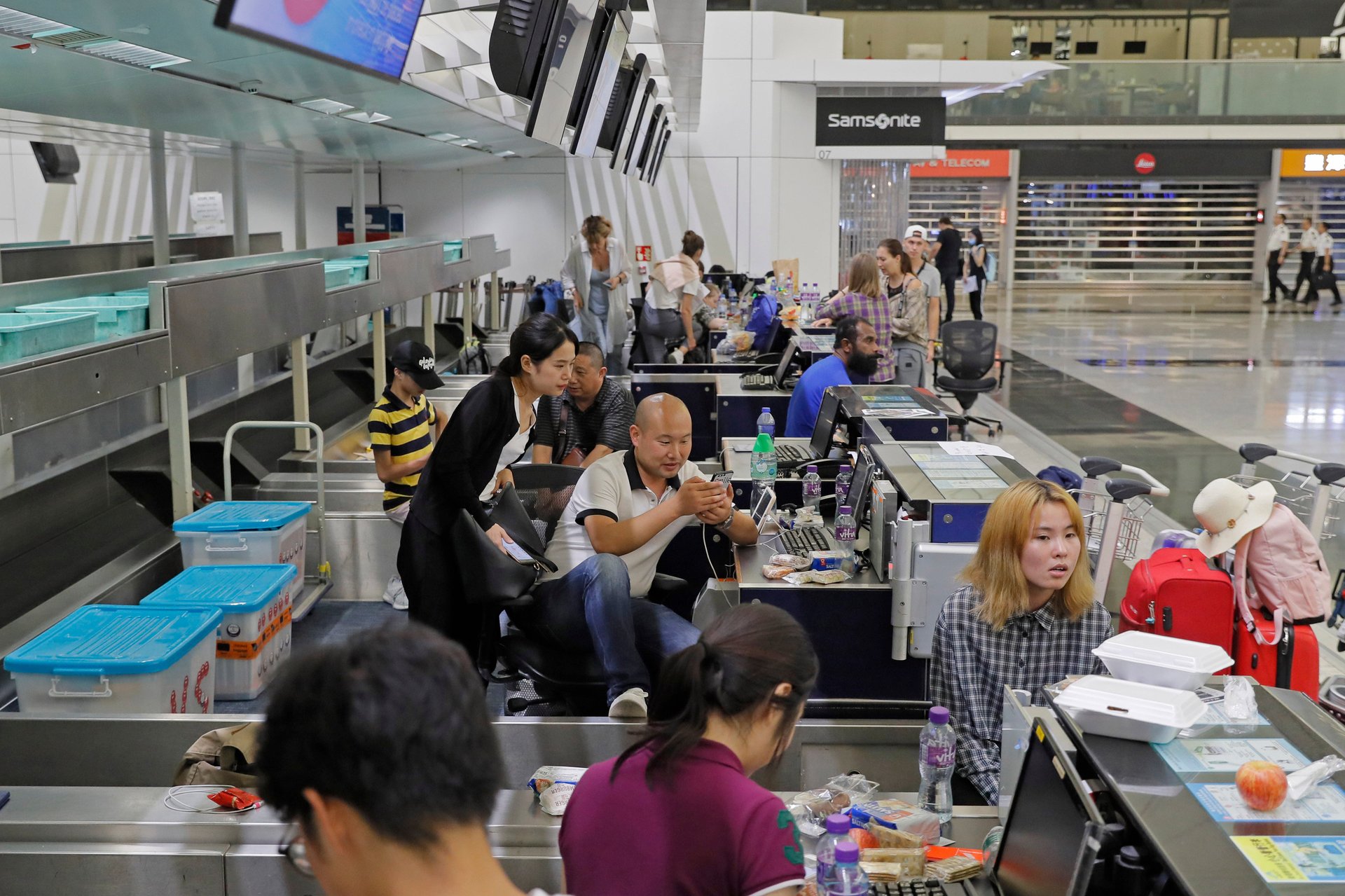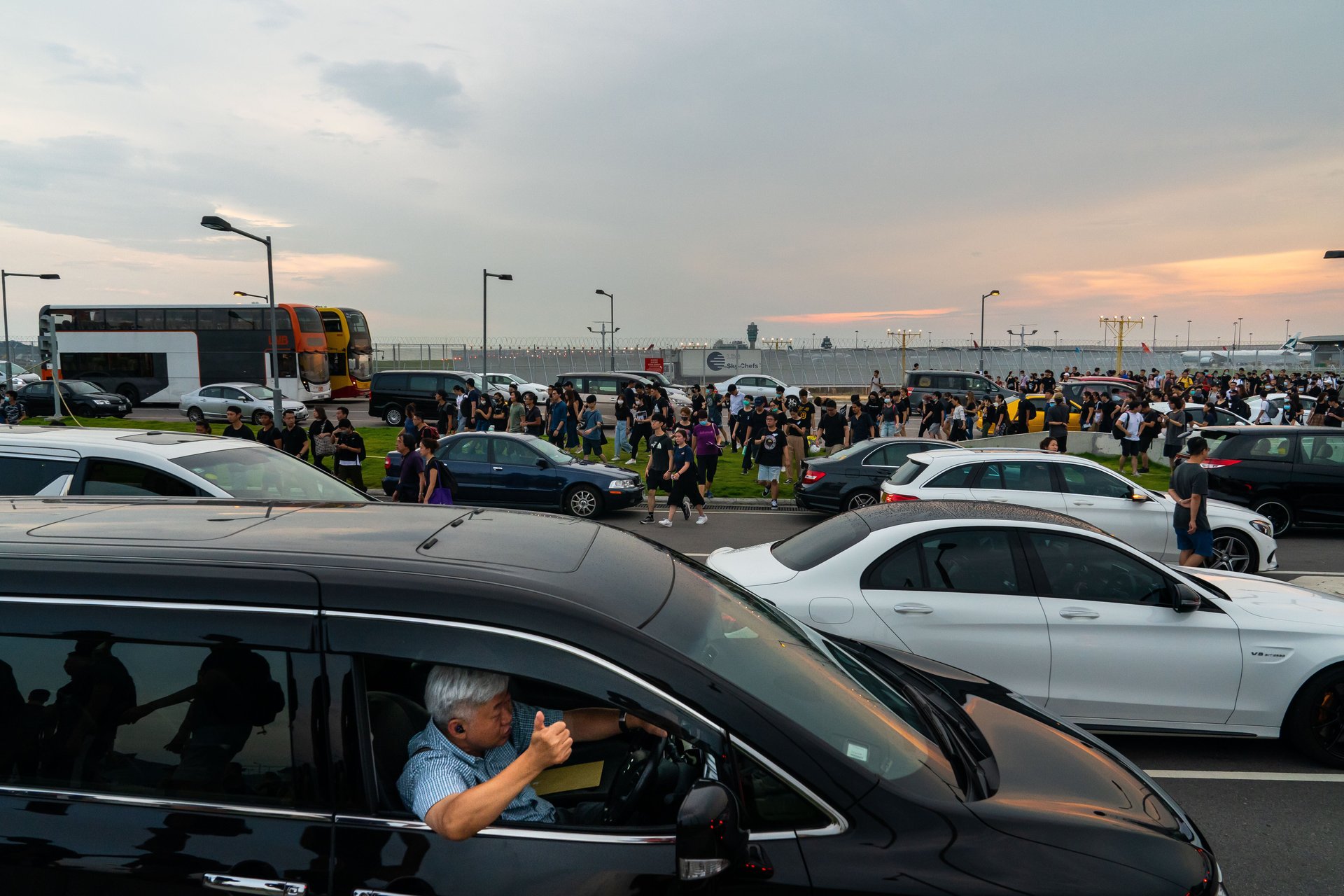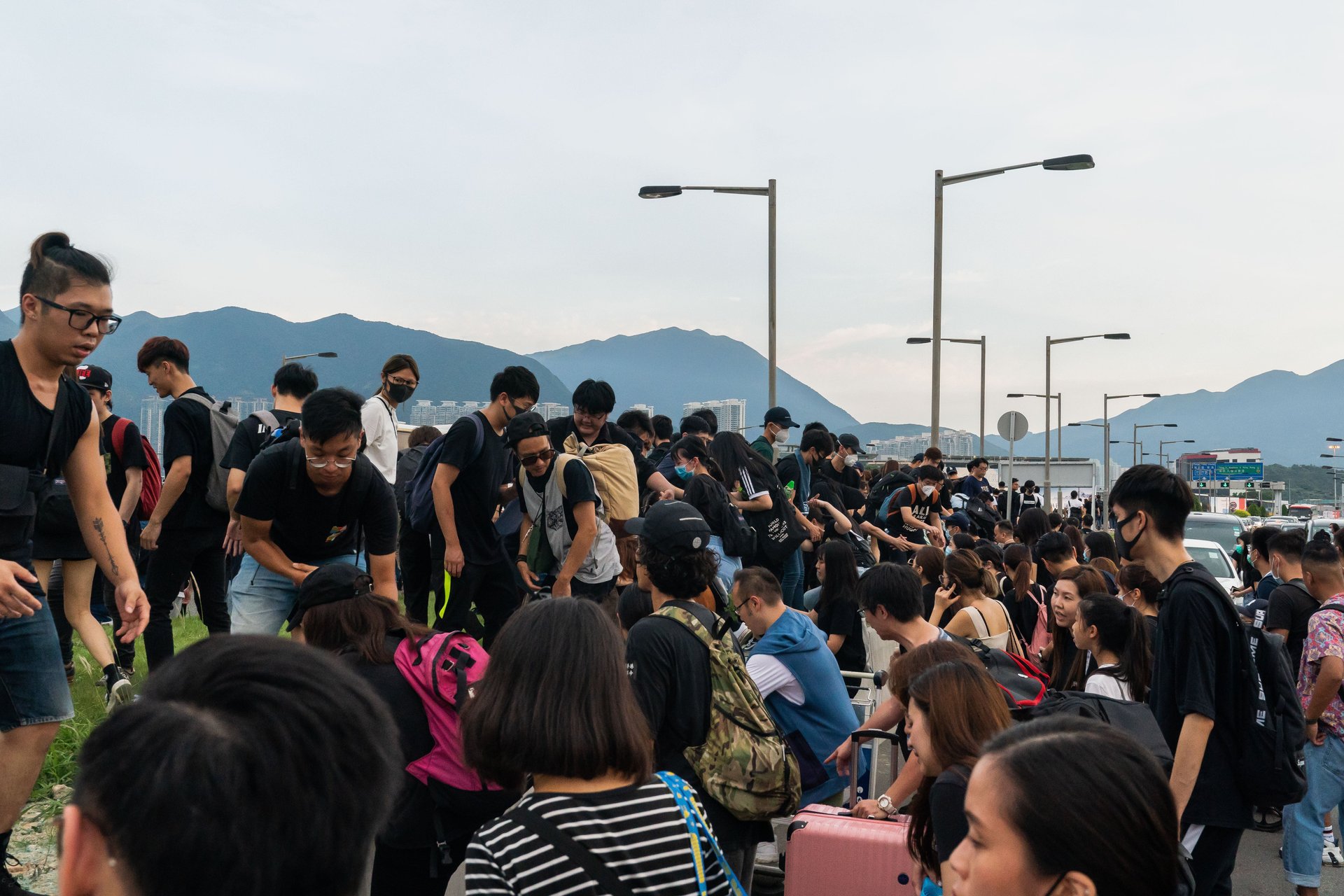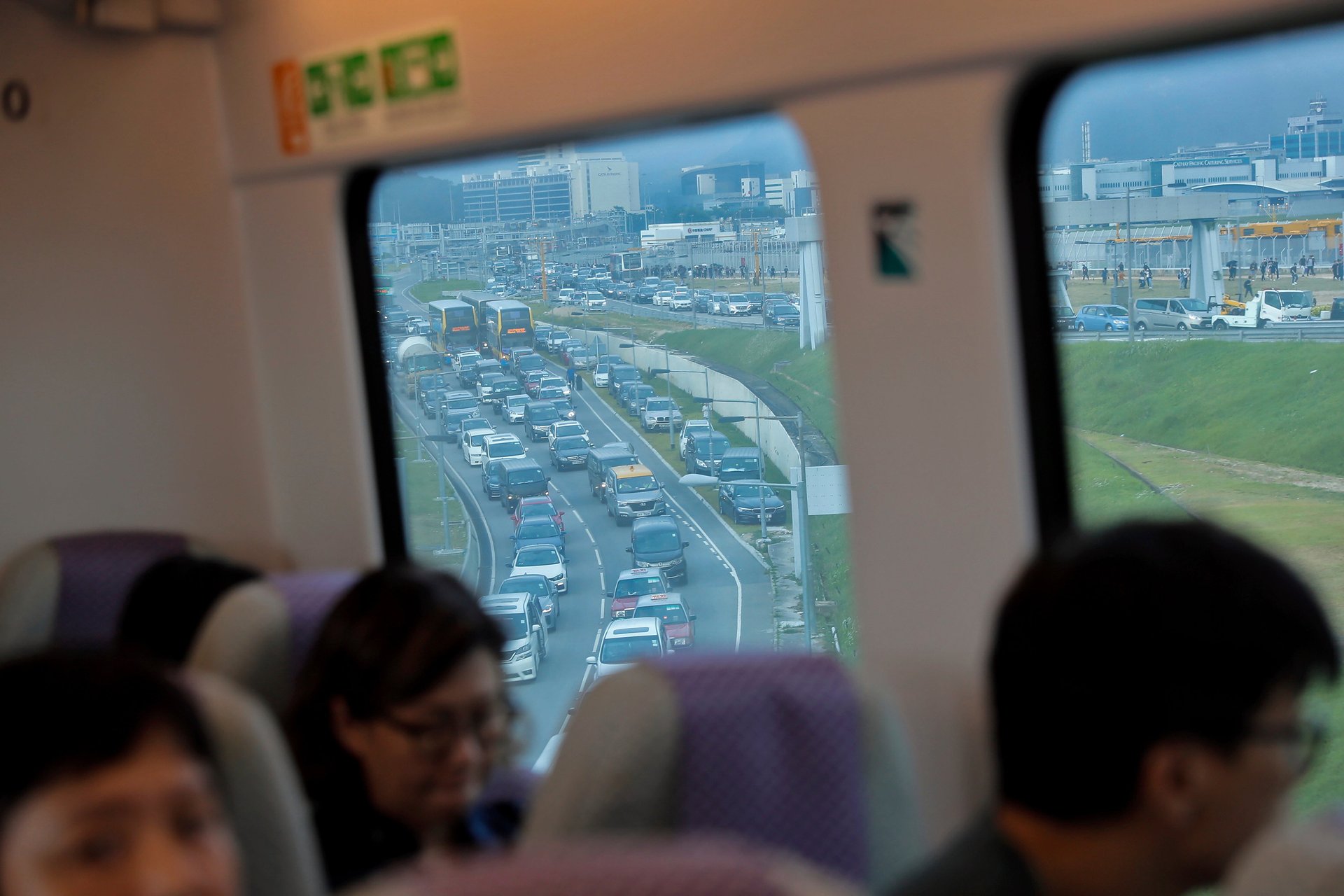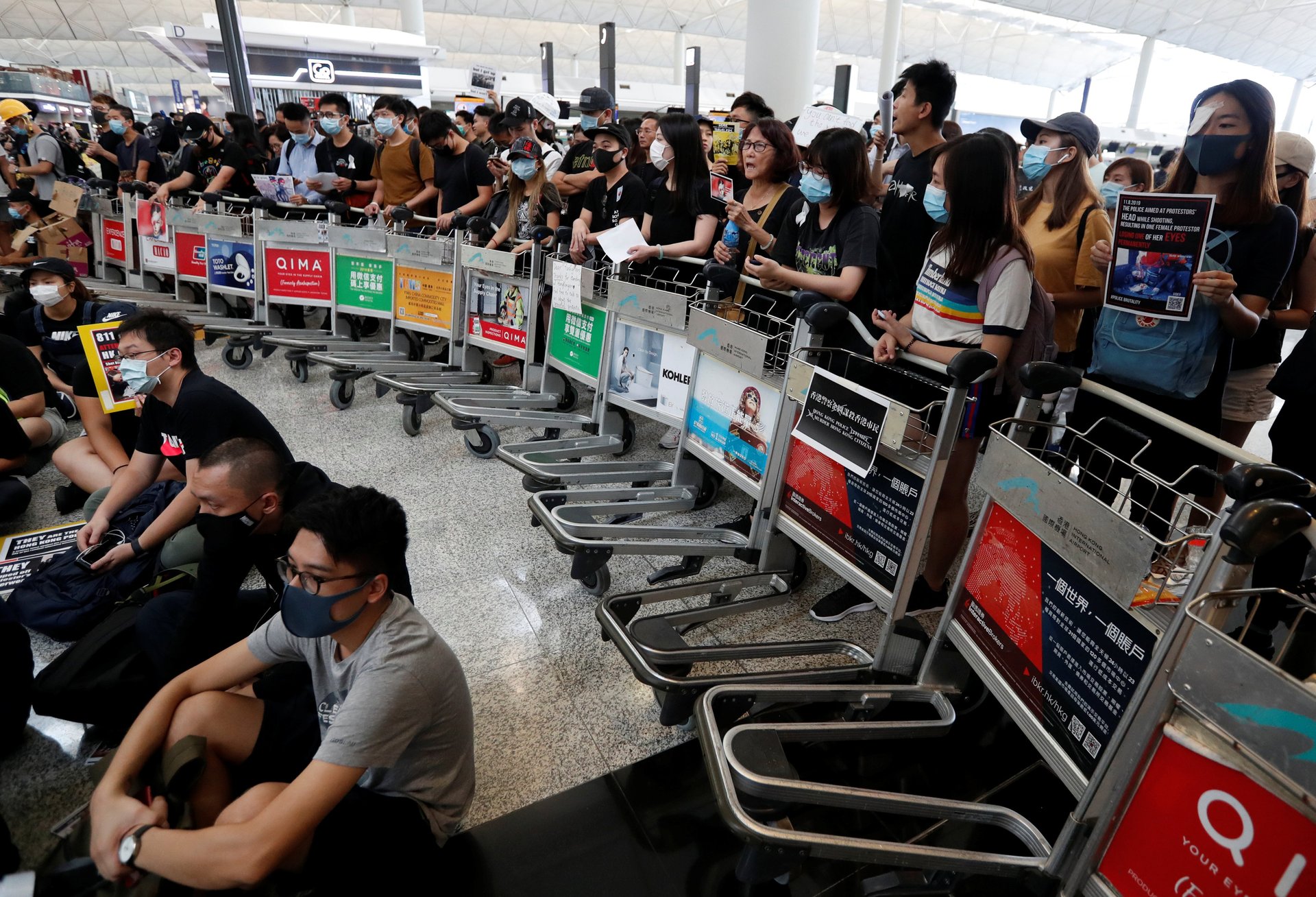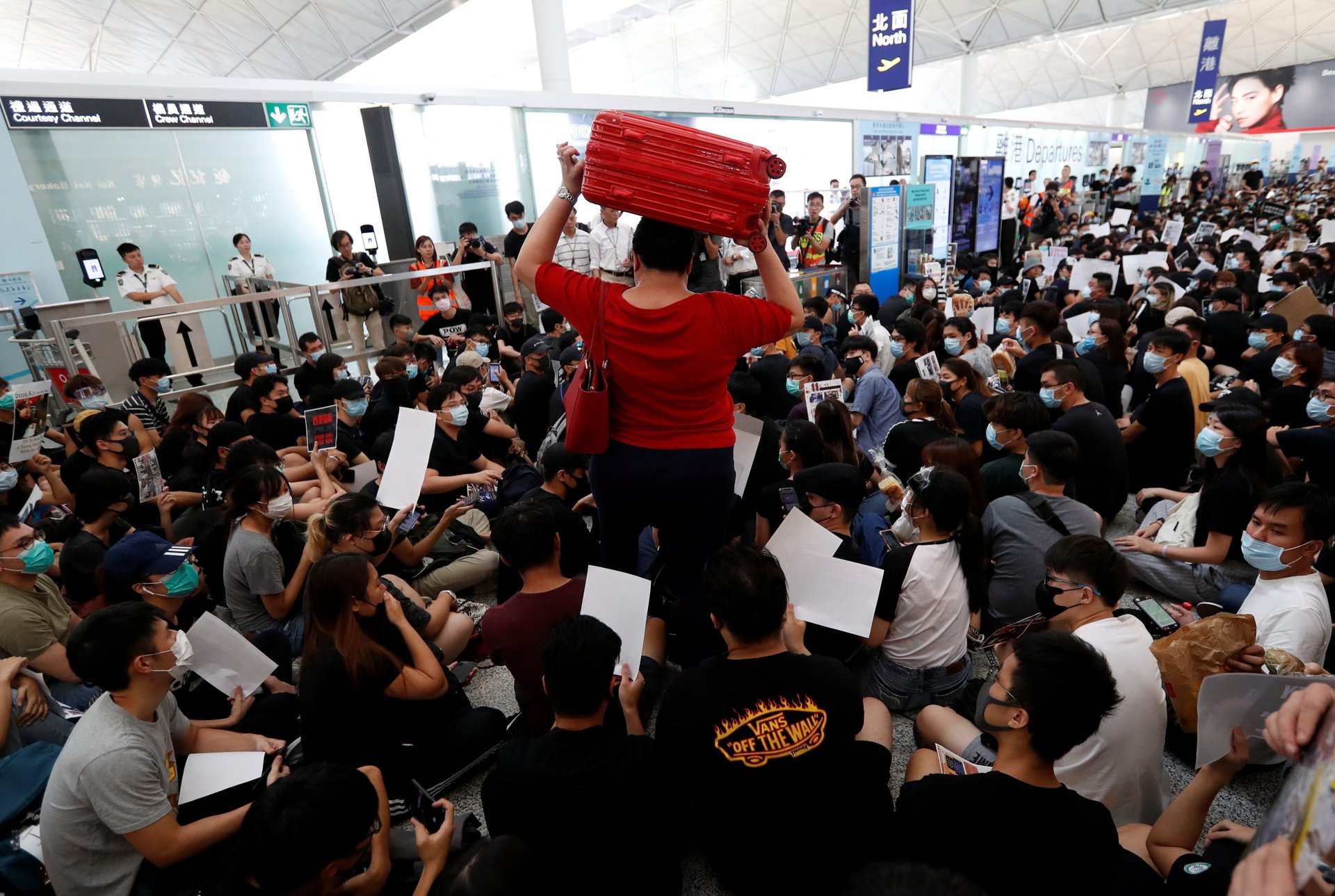Photos: Hong Kong protesters took over the city’s airport
For five consecutive days, protesters have staged mass demonstrations in the halls of Hong Kong International Airport. Yesterday (Aug. 12) afternoon, so many flooded the busy transport hub that the city’s airport authority was forced to make the unprecedented move of canceling all remaining flights. Shortly after 5pm today (Aug 13), the airport said it would ground all flights again as protesters returned to the airport to occupy both the arrivals and departures halls.
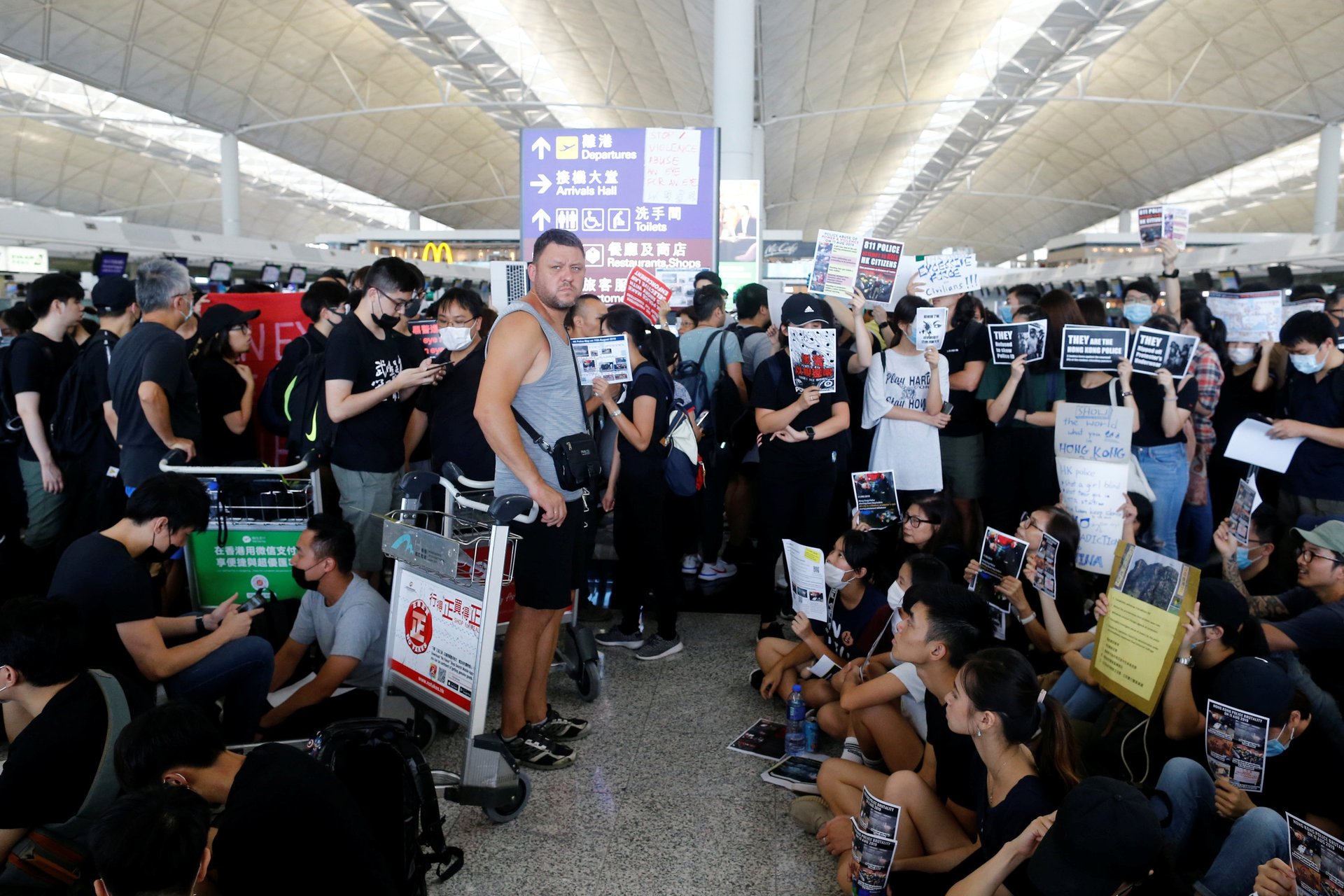

For five consecutive days, protesters have staged mass demonstrations in the halls of Hong Kong International Airport. Yesterday (Aug. 12) afternoon, so many flooded the busy transport hub that the city’s airport authority was forced to make the unprecedented move of canceling all remaining flights. Shortly after 5pm today (Aug 13), the airport said it would ground all flights again as protesters returned to the airport to occupy both the arrivals and departures halls.
While the past 10 weeks of protests initially began in opposition to a now-suspended extradition bill, the most immediate source of protester anger now is what many regard as police brutality. This comes after the police unleashed an extraordinary amount of force against protesters on Sunday (August 11), including disguising as protesters and making violent arrests, firing tear gas and rubber bullets directly into a train station as well as what appeared to be pepper balls at point-blank range, and allegedly hitting a female protester in the face with a bean bag round, causing serious eye injury and possibly blindness.
At a press conference this morning, chief executive Carrie Lam again evaded reporters’ questions and refused to offer a political solution to the ongoing crisis, instead repeating her condemnation of “violent protests” that threaten to destroy the economy and leave the city “smashed to pieces.”
The airport plays an outsize role in Hong Kong’s economy, accounting for 5% of the city’s GDP, according to the government. And as one of the world’s busiest airports, any disruption there has widespread global implications. It’s not just passenger flights that are affected, either. The airport funnels more freight by volume than any other airport, and while air freighters were able to take off last night, a lot of cargo is typically carried on passenger planes, according to the Guardian. The city’s secretary of transport and housing said yesterday that the protests and flight cancellations “seriously harmed the reputation of Hong Kong as well as the Hong Kong International Airport,” and urged demonstrators to “leave peacefully as soon as possible.”
